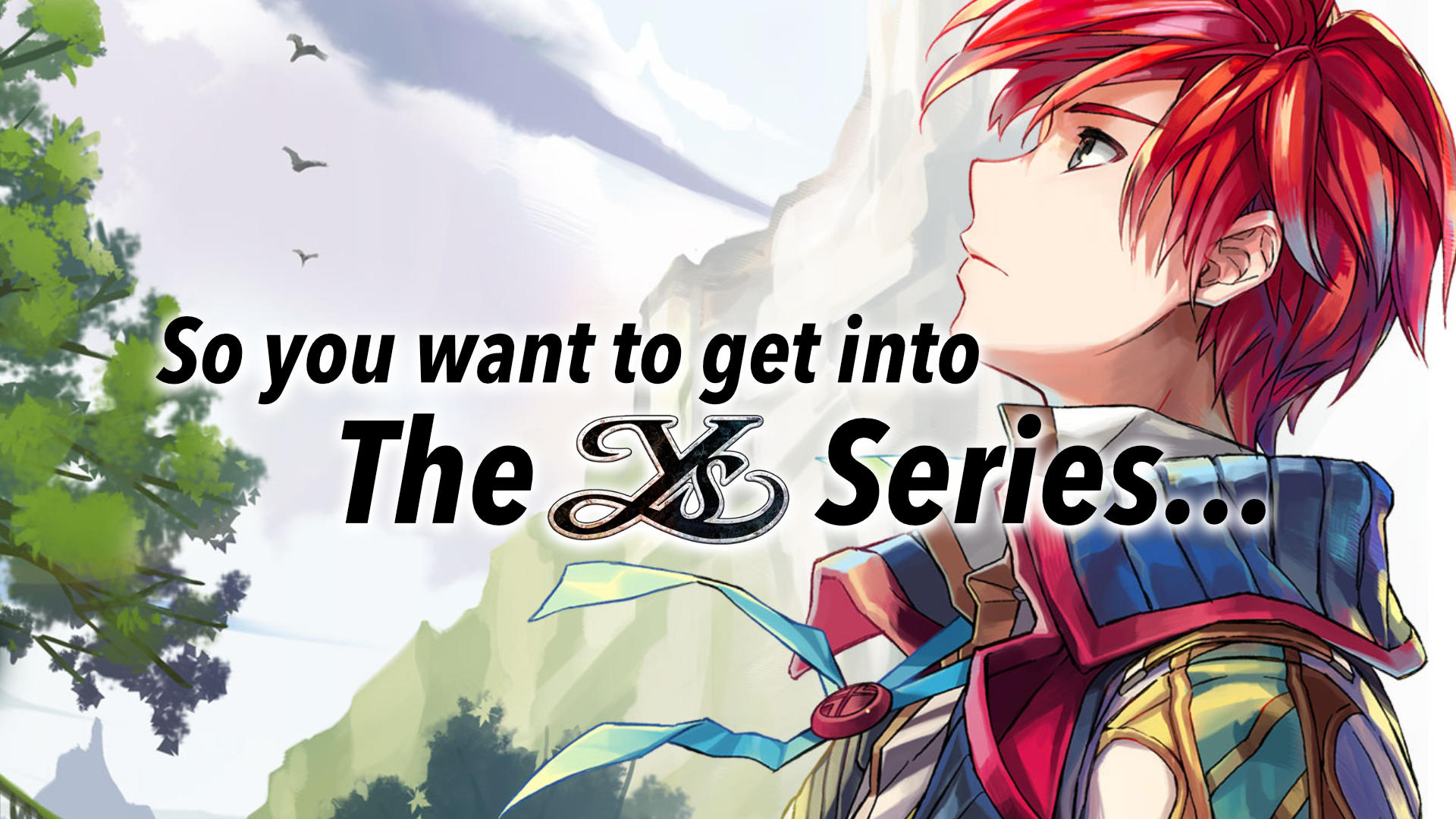2017 is a banner year for Ys fans. Not only have we received a new entry in the form of Ys VIII: Lacrimosa of Dana as well as a PC port of Ys SEVEN, but the series also celebrated its 30th anniversary in June. You might’ve heard quite a bit of buzz about Ys over the course of the past seven years — especially from us — thanks to the fine folk at XSEED (and in the case of VIII, NIS America) who’ve worked their butts off to ensure each new entry is readily available in English.
This wasn’t always the case. The Western release of an Ys title was once an incredibly rare event, one that drew little fanfare. After the 1991 multi-platform release of Ys III: Wanderers from Ys, fans didn’t see another Western release until Konami’s PS2 port of Ys VI: Ark of Napishtim in 2005! Thankfully, XSEED picked up the slack and saw to it that many of the titles we had originally missed out on were released one way or another. While not every Ys entry/remake/variant has seen an English release, the most important ones have, making it no better time to be an Ys fan than right now.
However, a series with such a long and winding history may be daunting to newcomers. If you’re curious, you shouldn’t let that history put you off — Read our series overview to find out just what Ys is all about, and find the best place for you to jump in.
What the heck is Ys?
Ys (pronounced “ease,” not “wise”) is Falcom’s flagship action RPG series. Despite being somewhat obscure even today, it happens to be one of the most important RPG franchises in the genre’s history. Ys, along with The Legend of Zelda, essentially codified the Action RPG genre. Whereas Zelda hid most of its stats in favor of equipment-based progression, Ys was one of the first titles to combine real-time combat with the experience-based progression systems of traditional RPGs. Ys‘ influence can be plainly seen across the 16-bit era, in titles such as Secret of Mana. Not so coincidentally, Ys creators Masaya Hashimoto and Tomoyoshi Miyazaki went on to found Quintet, where they co-developed Soul Blazer, Illusion of Gaia, and Terranigma, as well as other titles including ActRaiser.
Due to the hardware limitations of the late 1980s, earlier Ys titles featured awkward battle mechanics in which you had to literally run into foes from off-center to inflict damage; we’ll call it “bump combat,” for lack of a better term. Over the years, the series’ steady evolution adopted a more refined hack ‘n’ slash design, which earned Ys its reputation for blazing fast hyperkinetic combat and tense encounters with huge bosses. The mechanics were revamped from the ground up with 2009’s Ys SEVEN, which introduced party members who could be rotated at the touch of a button, each with their own attack attribute. Subsequent entries kept this system, meaning knowing which character would excel in what situation became as important as dexterity, while adjustable difficulty settings ensured that both hardcore Ys fans as well as those not familiar with action RPGs could tailor the challenge to their liking.
Ys is a weird title. What does that even mean?
The name Ys comes from the Breton legend of Ker-Is, a mythical city built off the coast of Brittany — Ys is the French spelling, and a form more widely recognized worldwide than the original Breton. Said to have been founded by King Gradlon the Great, Ys was built on land below sea level during low tide — the waters kept at bay by a great dam. To cut a long story short, Gradlon’s daughter, Princess Dahut, unwittingly caused the city to crumble beneath violent waves following her affair with a dashing knight, who just so happened to be the Devil himself incognito.
OK, so what does that have to do with the game?
Honestly? …Outside of the title, not a whole lot! The stories of Ys I & II, certain versions of Ys IV, and Ys Origin concern a mythical land called Ys, yet here it’s an island floating in the sky rather than a city beset by an apocalyptic flood. The series does eventually get its own flood myth in Ys VI, but it far more closely resembles Sumerian mythology than it does the myth of Ys. Ironically, the majority of the games have nothing to do with the series’ own mythical Ys at all!
Set in a world loosely based on early modern Europe, each entry (with a few exceptions) concerns the travel diaries of Adol Christin, a red-haired swordsman who wanders the world in search of adventure and unwittingly finds himself squaring off against eldritch gods in the process. From Ys III onward, Adol is usually accompanied by his BFF Dogi, an ex-thief who’s huge in stature and capable of punching through solid rock. Ys titles usually adhere to the same loose framework: Adol and Dogi roll into a new town, run afoul of the local authority, hunt down a series of magical artifacts, and end up saving the world. There’s usually a jailbreak, a shipwreck, and a broken heart or two left in their wake. That may sound repetitive on paper, but there’s a certain sweetness and genuineness about each game. Think of these plot beats as you would Final Fantasy‘s Moogles, Chocobos, and Cid… except they keep happening to the same two guys. That said, there’s also a cross-game through line regarding the machinations of the ever expansionist Empire of Romn, who Adol frequently finds himself in conflict with.
Sounds good. Can I get a quick rundown of each game?
You certainly can. Do note that we’ll only be touching on the “main” Ys titles, so we won’t be going over the spin-offs, whether that be the very good Ys vs. Trails in the Sky Alternative Saga, the very bad Ys Strategy, or the very misguided Ys Online: The Call of Solum.
The Games
Ys I & II (1987, 1988)
Where to Play: PC (Review), PSP/PS Vita (Review)
Ys I & II Chronicles, as per its title, collects the first two Ys games: Ancient Ys Vanished Omens and Ancient Ys Vanished The Final Chapter.
Set on the island of Esteria, young adventurer Adol Christin rolls into the town of Minea, where fortune teller Sara Tovah asks him to unravel the mystery of Ys and its vanished twin Goddesses, Reah and Feena. To do so, Adol must collect the Six Books of Ys, each written by a different priest. Sure enough, each book is located in a dungeon, under guard by all manner of bizarre creatures. The story was very light in the original release — Ancient Ys Vanished would dump Adol into the middle of Minea without so much as a “hello” upon pushing start! The Steam & PSP revisions expand on the plot greatly, providing extra characters, additional dialogue, and a short introductory chapter in which Adol pulls into Port Barbado — a whole added town — to meet the locals and get the skinny on what’s happening.
Ys I is a solitary quest, and an incredibly short one. After meeting the Goddesses, Adol heads into Darm Tower to confront Dark Fact, the demonic descendant of one of the Holy Priests of Ys. Not simply a final dungeon, Darm Tower is positively gargantuan; scaling it is literally the second half of the game! It’s within Darm Tower that Ys first introduces Dogi, who in a bizarre moment punches through a solid wall to help Adol escape from a trap — a plot beat that became something of an in-joke for the series as time went on.
Following the defeat of Dark Fact and the collection of the Six Books, Adol finds himself flung into the sky with a great beam of light… and that’s it — roll credits. At the time of the original release, this cliffhanger wasn’t resolved until the following year, but fortunately for those playing Ys I & II now, the story can continue without so much as a disc swap. Built on its prequel’s engine but slightly more advanced, Final Chapter opens with a cutscene of Adol touching down on the Island of Ys itself, where he’s found by Lilia, a young woman from Lance Village who brings him back to town. Adol ends up returning the favor by collecting the rare Celceta flower to cure her terminal disease, after which he leaves to complete his quest, with Lilia mooning after him.
Final Chapter eschews the overworld field in favor of more linear dungeons, though it’s still a massive quest and one much lengthier and more varied than its prequel. This time around, Adol gains a grimoire’s worth of magic for different purposes; the ability to fling fireballs makes a few boss battles feel like shoot em ups, while a spell that metamorphs Adol into a monster allows him to converse with his foes to gain some insight into what it means to be conscious. It’s very forward-thinking in a number of unexpected ways.
Ys III: Wanderers from Ys (1989)
Remade as Ys: The Oath in Felghana (2005)
Where to Play: PC, PSP/PS Vita (Review)
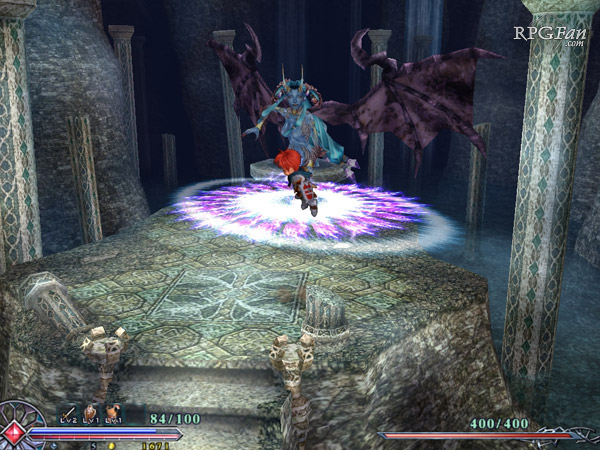
Ys III: Wanderers from Ys served as a new beginning for the series; one in which, as per the title, Adol and Dogi wander from Ys to embark on their own adventures. This particular journey sees Dogi bring Adol to his homeland of Felghana to meet his friends and enjoy a little vacation, but sure enough the two wind up in the middle of a dark plot to revive the eldritch god Galbalan. Wanderers was the most story-heavy Ys title at the time of its release, based around the town of Redmont. It also codified many of the series’ enduring plot characteristics: Along with this being the first of many adventures shared by Adol and Dogi, the game also introduced the recurring role of the haughty nobleman foil — here first portrayed by Dogi’s childhood friend, Chester Stoddart.
For a long time, Wanderers was the most easily accessible game in the series in the West, available on Sega Genesis, SNES, and Turbo-CD. It also happened to be the black sheep of the series — like Zelda II, Wanderers from Ys threw out the top-down exploration in favor of discrete side-scrolling stages. It also ditched the bump combat for a dedicated attack button, which could be held down to see Adol frantically windmill his sword-arm endlessly.
Fan reception to Wanderers was mixed — not because of the changes, per se, but rather the fact that none of these systems were particularly well-integrated. Adol’s attacks and movement both felt floaty and lacking in weight, while insufficient invincibility frames meant that even the earliest foes could plow right through him and end the game in seconds. Getting to the end of Wanderers was a real test of endurance. Fortunately, Falcom gave Wanderers a second chance in 2005 with The Oath in Felghana, a full remake in the excellent Ys VI engine. Oath makes remarkable improvements to Wanderers‘ mechanics, and like Chronicles, also greatly expands upon its plot and character development.
Ys IV: Mask of the Sun (Super Famicom, 1993)
Ys IV: The Dawn of Ys (PC Engine, 1993)
Ys IV: Mask of the Sun ~A New Theory~ (PlayStation 2, Mobile, 2005)
Remade as Ys: Memories of Celceta (2013)
Where to Play: PS Vita (Review)
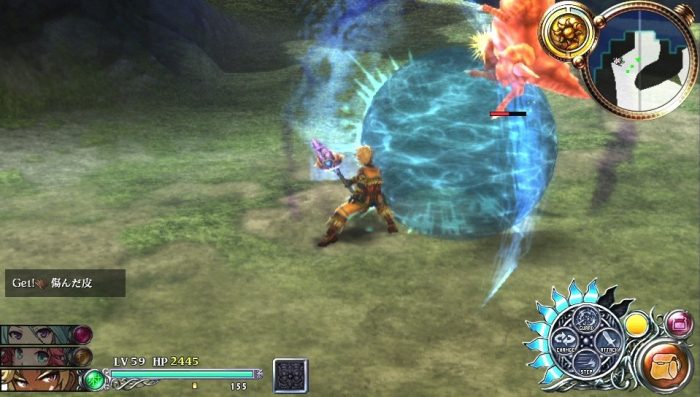
Ys IV is a bit of an odd duck. Seemingly learning from Wanderers‘ mixed reception, Ys IV returns to the gameplay of I & II — bump combat and all — and adheres so closely to the format that it almost feels more like an apology than it does its own entry. To make matters stranger, Falcom didn’t develop their own version of the game until 2013, instead licensing the plot out to two different third parties. The resulting games, Tonkinhouse’s Ys IV: Mask of the Sun and Hudson Soft’s Ys IV: The Dawn of Ys, share a number of characteristics. Adol departs from Minea to answer a distress call in Celceta. Once there, he runs afoul of the Romun military before meeting with swordswoman Karna and shady information broker Duren, and the three seek out the mystery of the winged Eldeen people.
The circumstances of Adol’s journey are different depending on the game — Dawn begins with Adol and Dogi together, while Mask instead pairs Adol with Dr. Flair, a minor character from Ys II. Both titles see Adol return to Esteria for a time; Mask sends you to revisit a grounded Ys, while Dawn takes you back into Darm Tower. Although Falcom considered Mask of the Sun to be the canonical entry at the time, Dawn of Ys certainly had the edge, with eight-directional movement, gorgeous cutscenes, voice acting, and an excellent Redbook soundtrack arranged by Ryo Yonemitsu.
Much to fans’ chagrin, neither of these titles came to the West. US support for the Turbo-CD ended in mid-1994, barely six months after Dawn‘s release; and Tonkinhouse were virtually unknown outside of Japan — the studio’s SNES port of Wanderers from Ys was their first and last title to see a localization. Taito put out a pair of mediocre remakes of Mask for PlayStation 2 and Mobile around 2005, but it wasn’t until 2013 that Falcom gave it the treatment it deserved with Ys: Memories of Celceta, a Vita-exclusive built in an improved version of the Ys SEVEN engine. Memories was an even bigger undertaking than Oath; the main plot beats, character names, and town names were kept, but the story received a complete overhaul. Instead of venturing off from Minea, Adol awakens in Celceta sans memory. With no other option, he partners with Duren — still an information monger, but now a muscular stand-in for Dogi as opposed to a lithe thief — and the two head into the untamed wilderness in search of Adol’s past.
Ys V: Kefin, The Lost City of Sand (1995)
Where to Play: Super Famicom
Near the end of the Super Famicom’s life cycle, Falcom decided against farming the next Ys title out, and instead briefly returned to console development to create Ys V: Kefin, The Lost City of Sand. Set within Xandria off the northern coast of the Afroca continent, Kefin somewhat uncharacteristically sees Adol serve as a hired mercenary for the shady merchant Dorman. His task: collect a series of mystic crystals said to reveal what happened to the eponymous Lost City of Sand.
Kefin did away with Ys IV‘s aging bump combat in favor of a more fashionable Zelda-esque engine. It should’ve been a no-brainer to modernize, but the insufficient reach of Adol’s sword and his sluggish speed felt just above the maligned Ys clone Lagoon. Coupled with a drab color palette, competent yet subdued music, and no sign of fan-favorite Dogi, Kefin is easily one of the weaker titles in the series. It also happens to be the only mainline Ys entry to not yet see a localization or full remake — like Ys IV, it received a pair of underwhelming PS2 and mobile remakes courtesy of Taito in the mid-2000s — so this is one that would surely benefit from the Oath in Felghana/Memories of Celceta treatment.
Ys VI: The Ark of Napishtim (2003)
Where to Play: PC (Review)
After eight long years, Falcom returned to their flagship series with Ys VI: The Ark of Napishtim. Following a shipwreck, Adol and Dogi find themselves trapped on the island of Canaan, where the indigenous Rehda people are faced with the colonization efforts of — you guessed it — the Romun military. Seeking a way off the island, Adol eventually has to deal with Romun General Ernst’s efforts to activate the titular Ark of Napishtim, an ancient weather control machine with catastrophic power.
Whereas Wanderers from Ys marked a narrative shift for the series, so did Ark of Napishtim signify a new beginning mechanically. No longer relying on swapping back-and-forth between combat styles, Falcom created a new engine that allowed for speedy combat, Metroidvania-esque navigation obstacles, and puzzle solving — and felt like a natural at all three. It was the groundwork laid by Ark of Napishtim that earned Ys its rightful reputation as fast and furious.
Ys Origin (2006)
Where to Play: PC (Review), PS4/PS Vita (Review)
Set in the distant past, Ys Origin is the first and, at the time of writing, only mainline Ys entry to not star Adol. Instead, players are given a choice of protagonist between Yunica Tovah and Hugo Fact. Each a descendant of a High Priest of Ys, Yunica wields a polearm and controls most like Adol, while mage Hugo is able to launch an endless barrage of projectiles.
Taking cues from Ys I, Origin is set entirely within Darm Tower, where Goddesses Reah and Feena had been seen entering before vanishing. Yunica and Hugo descend from Ys to join the search party from ground level. Although they split up at the story’s outset, both follow the same path through the tower, punctuated by different story scenes. Finishing both campaigns unlocks a secret third character, whose own adventure ties up loose ends before culminating in an extra final boss. This may sound like a tall order, but Ys Origin is a petit affair; each playthrough takes about six hours, making the true ending tenable, while the three drastically different playstyles keep things fresh.
Ys SEVEN (2009)
Where to Play: PSP/PS Vita (Review), PC (Review)
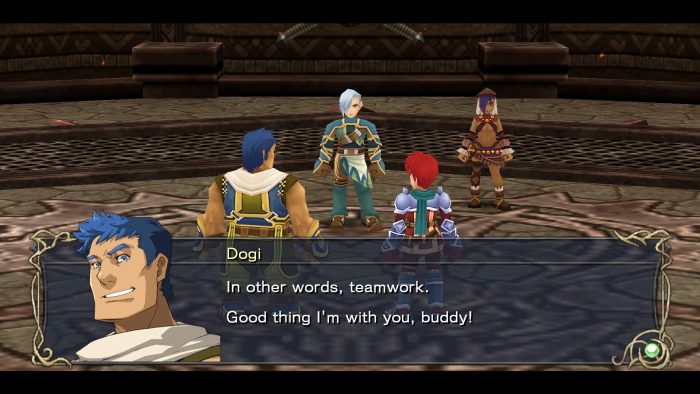
SEVEN was the next big turning point for Ys, and it marked Falcom’s return to console (or in this case, handheld) development for the first time in fourteen years. To celebrate this occasion, the series received its biggest change to date: Whereas Ark of Napishtim brought Ys‘ format into the 21st century, SEVEN chose to reinvent the wheel, adding party members, side-quests, and loot-based crafting.
SEVEN sees Adol return to the Afroca continent to visit the Kingdom of Altago, this time with Dogi in tow. They haven’t picked the best time to explore; Altago has entered an uneasy ceasefire with Romn, and all the while the prime minister uses the discord as a power play. Nevertheless, Adol scours the country, Dogi in tow, and the pair befriend the elders of each of Altago’s indigenous tribes to find a way to halt a calamitous event.
Ys VIII: Lacrimosa of Dana (2017)
Where to Play: PS4 (Review), PS Vita (Review), Switch (Review), PC
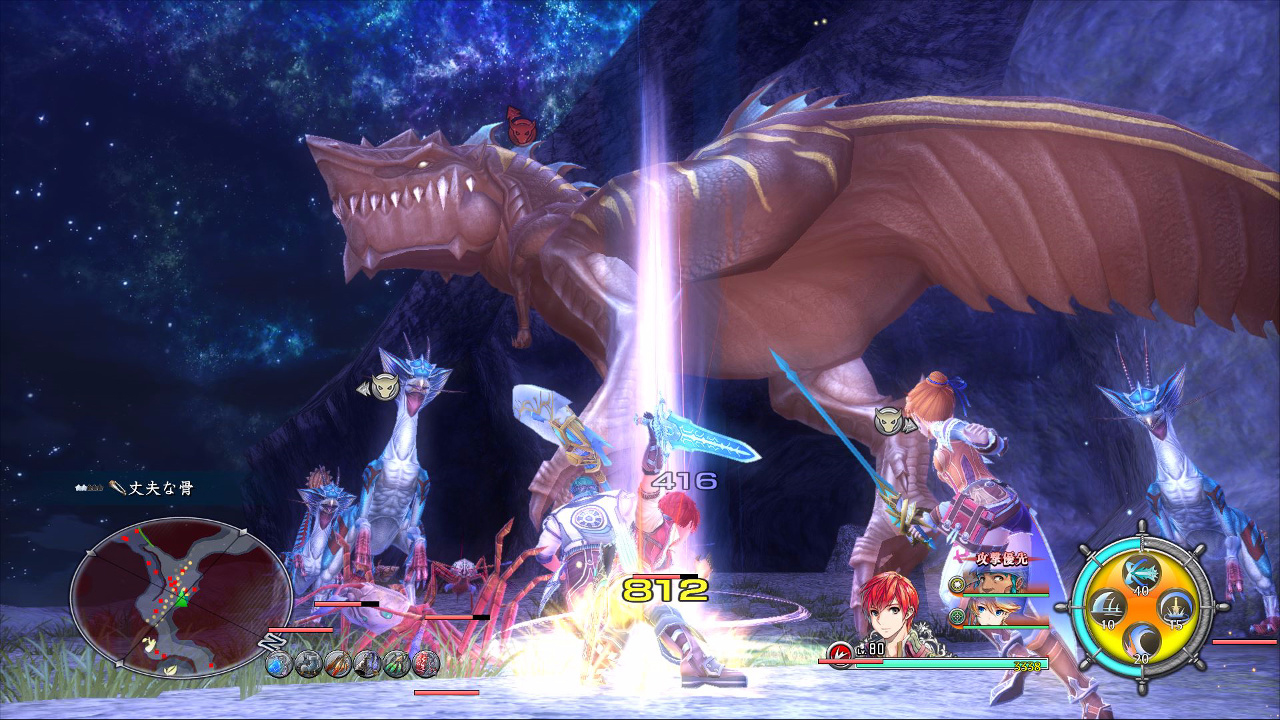
The new hotness this autumn, Ys VIII: Lacrimosa of Dana initially released for Vita in Japan, with an enhanced PS4 port following several months later. Notable as Falcom’s first PlayStation 4 title, Lacrimosa of Dana is a deserted island story: Adol and Dogi end up on the Cursed Island of Seiren following a shipwreck. After reuniting, Dogi stays behind in a makeshift village to look after the injured, while Adol and a motley crew of fellow passengers head out in search of survivors. Along the way, Adol’s dreams are haunted by the story of Dana, a warrior from Seiren’s long fallen civilization. What do these dreams mean, and how are Adol and Dana linked?
Like Memories of Celceta, Lacrimosa of Dana builds on the framework introduced in SEVEN, adding mechanical and narrative twists to forge its own identity. There’s something of an open-world aspect to hunting down your fellow marooned; the more survivors you bring back to camp, the more your village grows, and loot is more important than ever seeing as there’s no commerce on a deserted island. Sometimes your village is beset by monsters, whom Adol and friends beat back in multi-wave tower defense battles. Notably, this is the first Ys title in which Adol shares the spotlight with another character — his dreams are playable chapters which follow the adventures of Dana and her own group of allies.
Wrap Up & FAQs
So are these sequential stories?
I’m glad you asked, because this is where things can get a little confusing. Following a few adjustments over the years, the canonical timeline is thus:
Ys Origin – 800 years before Ys I
Ys I & II – Adol’s first adventure, age 17
Ys: Memories of Celceta – Adol age 18
Ys: The Oath in Felghana – Adol and Dogi’s first adventure, age 19.
Ys V: Kefin, The Lost City of Sand – Adol age 20
Ys VIII: Lacrimosa of Dana – Adol age 21
Ys VI: Ark of Napishtim – Adol age 23
Ys SEVEN – Adol age 23
Be aware that this is subject to change at any time, as you’ll notice Ys VIII slotted in between V and VI, decades after both titles’ releases!
Does this mean I’ll be lost if I don’t start at Ys Origin?
Certainly not! Although there’s definitely a through line, almost every Ys entry is self-contained. Ys II is the only title in which foreknowledge is absolutely key to the experience, and that’s why Ys I & II are so commonly packaged together. You really could start anywhere and you’d be fine.
That’s too overwhelming. Where do you think I should start?
Okay, I’m going to give it to you straight. I’d say start with Oath in Felghana, as it’s incredibly accessible, varied, and breezes by within 8-10 hours. After that, it’s worth seeing what the new format has to offer — if you have a Vita at your disposal, Memories of Celceta is essential. Otherwise, the PC port of Ys SEVEN is an excellent choice. Depending on which style you like better, you can move on to the titles which share engines. Oath in Felghana, Ys VI, and Ys Origin are built from the same framework; and Ys SEVEN, Memories of Celceta, and Lacrimosa of Dana make up their own mechanical trilogy.
Ys I & II are also quick and warrant a playthrough, but their archaic systems require a bit of good will to really get to grips with, so maybe hold off on those until you’re sure you enjoy the series. Despite the rough combat, Ys I & II excel at building mystery. There’s a certain charm to being dropped into the vague land of Esteria to puzzle things out for yourself, while the Chronicles remakes provide just enough storytelling to keep you reaching for the horizon.
You’ll notice I’m not chomping at the bit for you to go out and get Lacrimosa of Dana right away. There’s a reason for that, and it’s not because I think it’s a bad title — in fact, quite the contrary, it’s very good. However, most Ys games can be wrapped up between 10-20 hours, while Lacrimosa of Dana is notably longer at 50-60 hours. I know, FOMO and all, but that’s a big old time investment for a newcomer. Not to mention a pricey one.
That’s it!
So there we go folks, that’s Ys. Two little letters that signify so much. I realize I may be preaching to the converted, but I hope this guide will sufficiently entice anyone curious yet hesitant to give this groundbreaking series a go.

